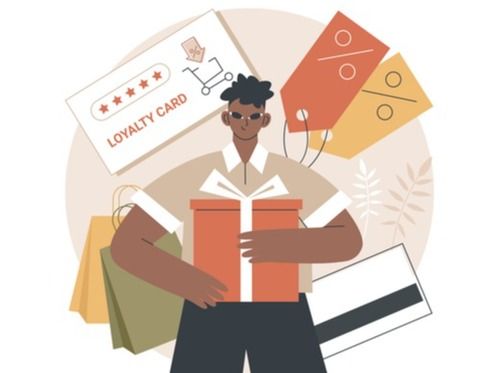Creating an Effective Loyalty Program

A well-designed loyalty program can significantly increase customer retention, boost engagement, and drive long-term business success. But how do you do it? That’s what we’re here for! Here's our tips and tricks on how to create an effective loyalty program:
1. Define Clear Objectives
First, determine what you want to achieve with your loyalty program. Do you want to increase customer retention, drive repeat purchases, or enhance brand loyalty? Defining clear objectives will help shape the structure and features of the program.
- Example Objective: A retail brand may want to increase repeat purchases by 20% within six months.
2. Know Your Audience
Understand your customers’ behaviors and preferences. Analyze purchase history, engagement data, and feedback to create a program that offers rewards your audience finds valuable. Tailoring the program to your customer base is essential to its success.
- Actionable Tip: Conduct surveys or analyze buying patterns to identify what incentives will motivate your customers, such as discounts, exclusive access, or gifts.
3. Choose the Right Type of Loyalty Program
There are several types of loyalty programs, and choosing the right one is key. Popular types include:
- Points-Based Programs: Customers earn points for purchases, which they can later redeem for rewards.
- Tiered Programs: Customers unlock different reward levels based on their spending.
- Subscription-Based Programs: Customers pay a fee to join and receive exclusive benefits.
- Actionable Tip: Match the program type with your business model. For example, a points-based system works well for businesses with frequent purchases, while a tiered program might suit luxury brands.
4. Offer Meaningful Rewards
The rewards you offer must be enticing enough to motivate customers to participate. Common rewards include discounts, free products, early access to sales, or personalized offers. Ensure the rewards align with your business’s offerings and your customers' desires.
- Example: A cosmetics brand might offer free products after a certain number of purchases, while a fitness company could offer discounted classes to frequent clients.
5. Make It Easy to Participate
Simplicity is crucial for customer engagement. Your program should be easy to join, and the process for earning and redeeming rewards should be clear and user-friendly. Complicated processes can deter customers from participating.
- Actionable Tip: Use technology to streamline the process. Integrate the loyalty program with your mobile app or website to make it easy for customers to track points, rewards, and tiers.
6. Incorporate Personalization
Personalization makes loyalty programs more effective. Use data to personalize offers based on customers' buying habits and preferences. Offering customized rewards or recognizing customers on special occasions, like birthdays, can increase their emotional connection to your brand.
- Example: Offer personalized rewards like exclusive product recommendations or discounts on favorite items based on past purchases.
7. Promote Your Program
A loyalty program is only effective if customers know about it. Promote the program through your website, social media channels, email marketing, and in-store displays. Educate customers about the benefits and how they can easily join and participate.
- Actionable Tip: Use email marketing to send reminders about available rewards or promotions to keep your loyalty program top-of-mind.
8. Measure and Adjust
Track the performance of your loyalty program using metrics like customer retention rates, repeat purchase rates, and program engagement. Regularly analyze this data to identify what’s working and what isn’t. Make adjustments based on customer feedback and engagement trends to keep the program effective and appealing.
- Actionable Tip: Use analytics tools to monitor how often customers redeem rewards, and refine your offerings to increase participation.
Creating an effective loyalty program requires careful planning and ongoing optimization. By focusing on clear objectives, understanding your customers, offering valuable rewards, and maintaining simplicity, you can build a program that strengthens customer loyalty, increases retention, and drives long-term success.